Quote:
Originally Posted by winny

I'm going to have a look at what other squadrons were operating out of Hornchurch, Biggin Hill and Duxford at the time too.
It's harder to find BoB combat reports than I thought, initially (with VERY limited data) it would appear that some 3 or 4 stations were first issued 100 oct in May/June, then more were added in July (found ref to 2)
|
Hi Winny – One should be careful to not draw the conclusion that a note in a combat report demonstrating 100 octane usage on a given date is an indication of when those stations
"were first issued 100 oct".
For example:
Combat report of 151 Squadron from 18 May 1940 follows the squadron’s conversion to 100 octane fuel in February 1940:
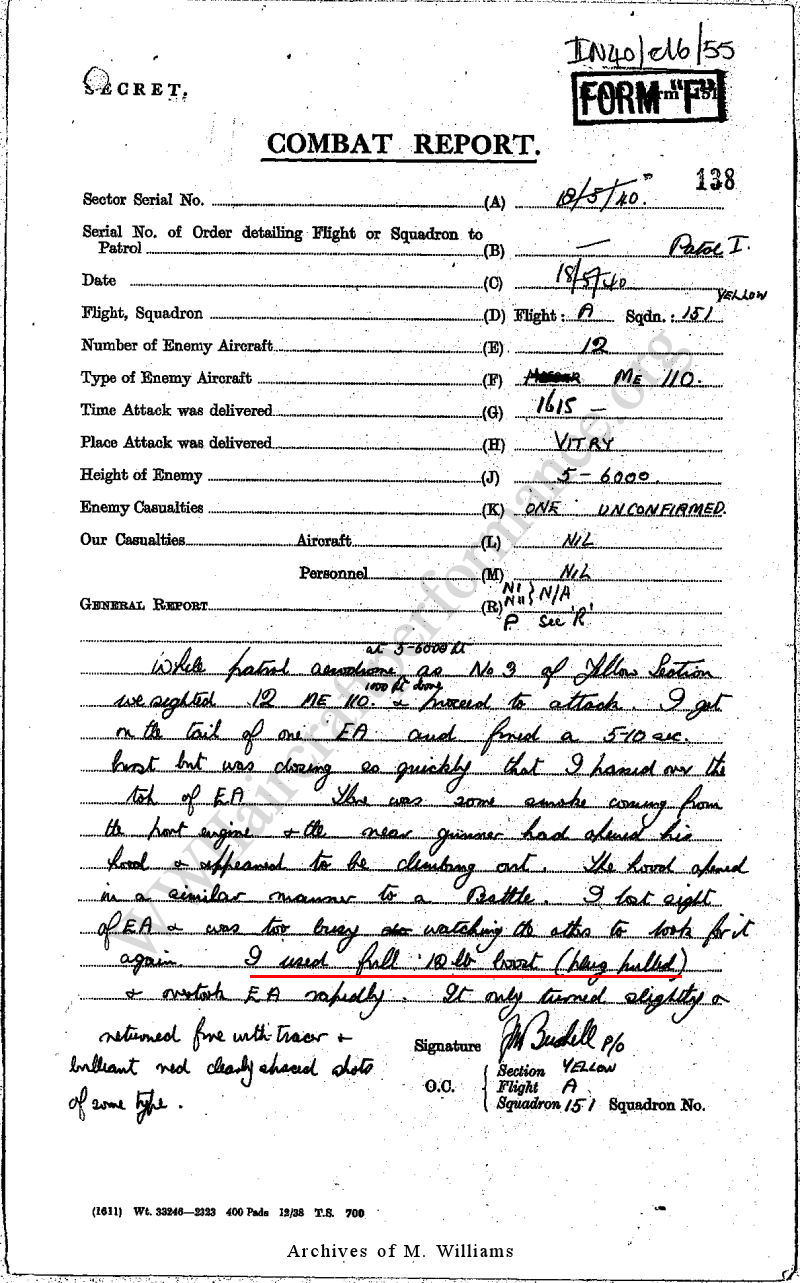
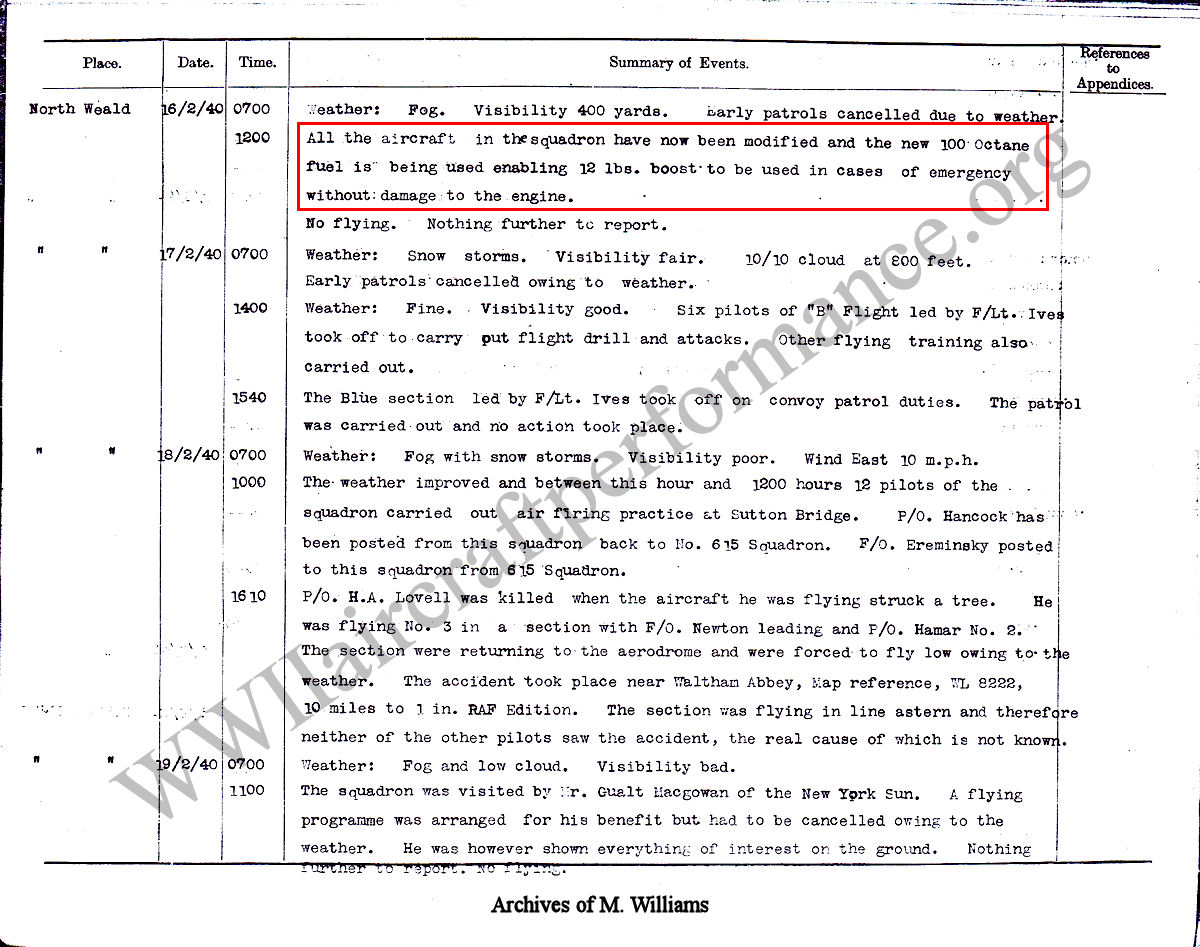
Combat report of 611 Squadron from 2 June 1940 follows the squadron’s conversion to 100 octane fuel in March 1940:
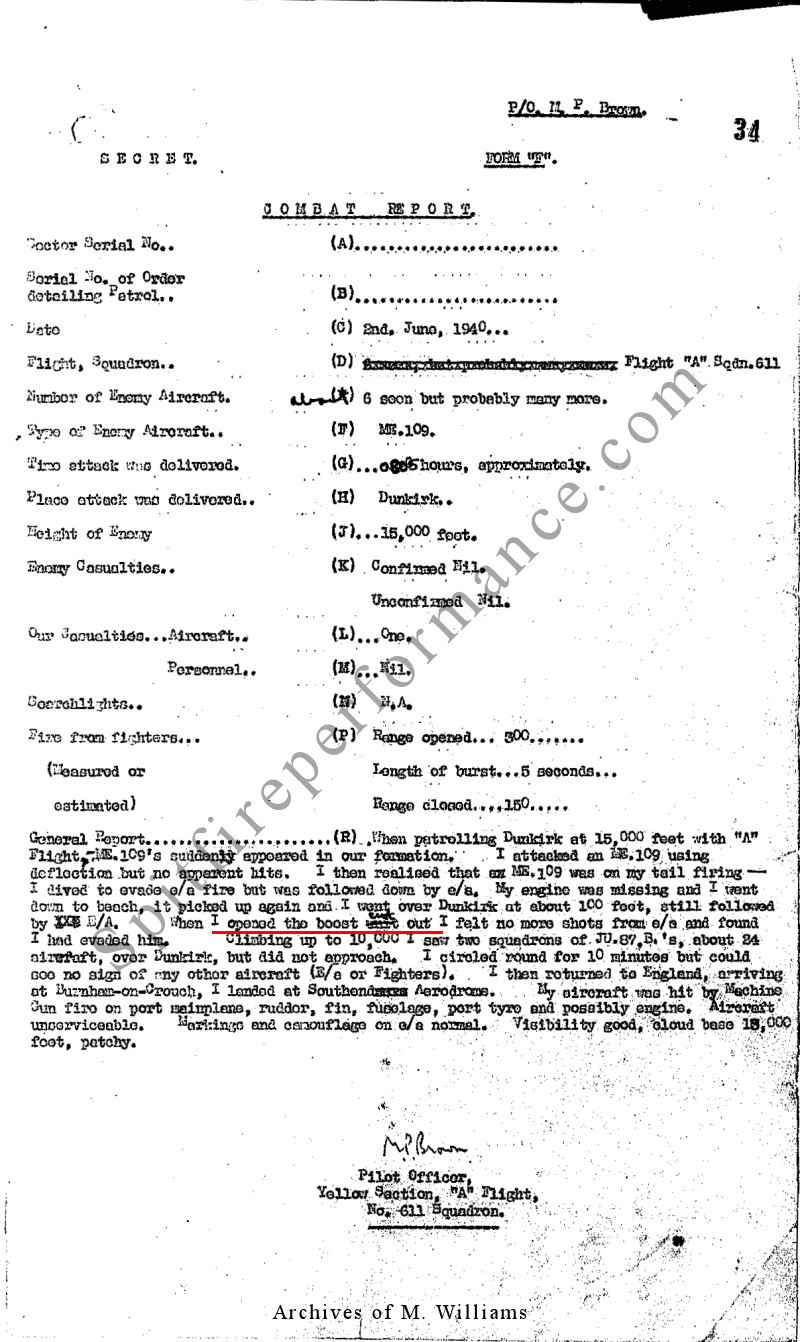
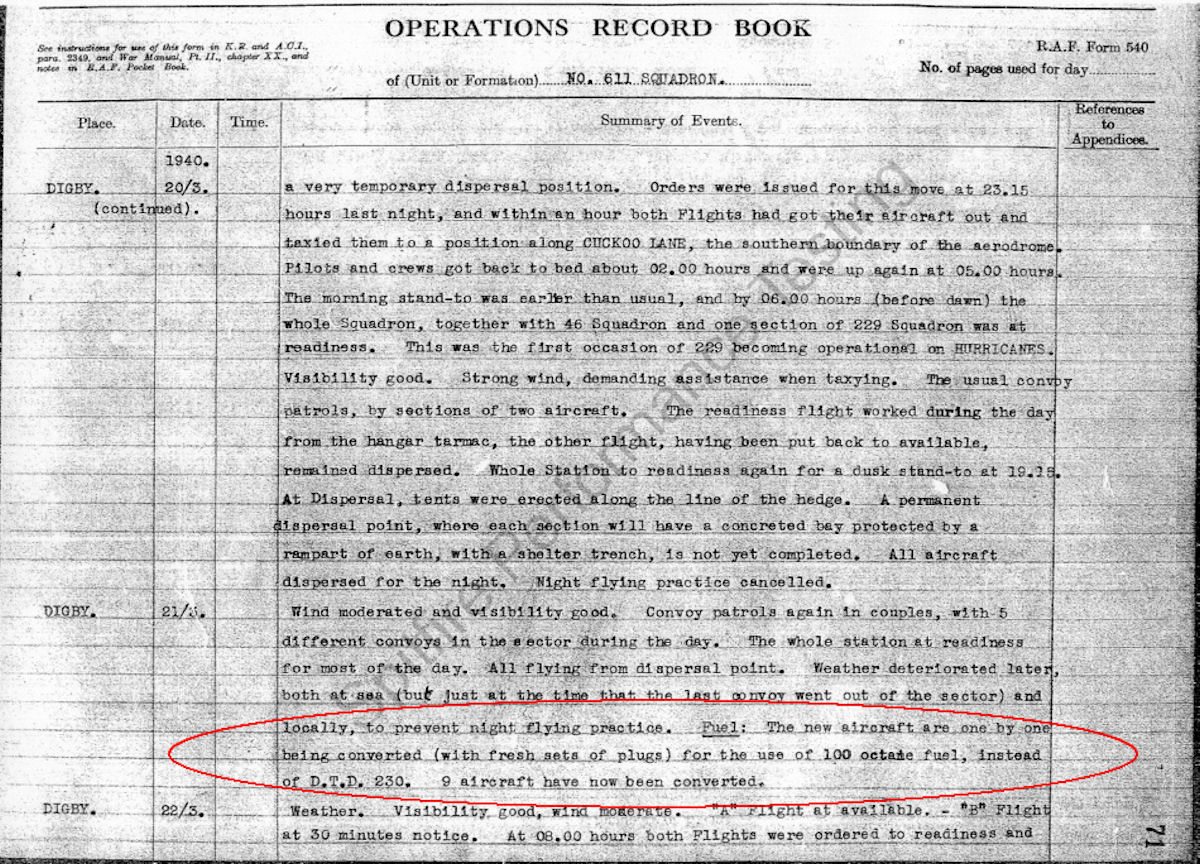
Combat report of 74 Squadron from 24 May 1940 follows the conversion to 100 octane fuel in March 1940:
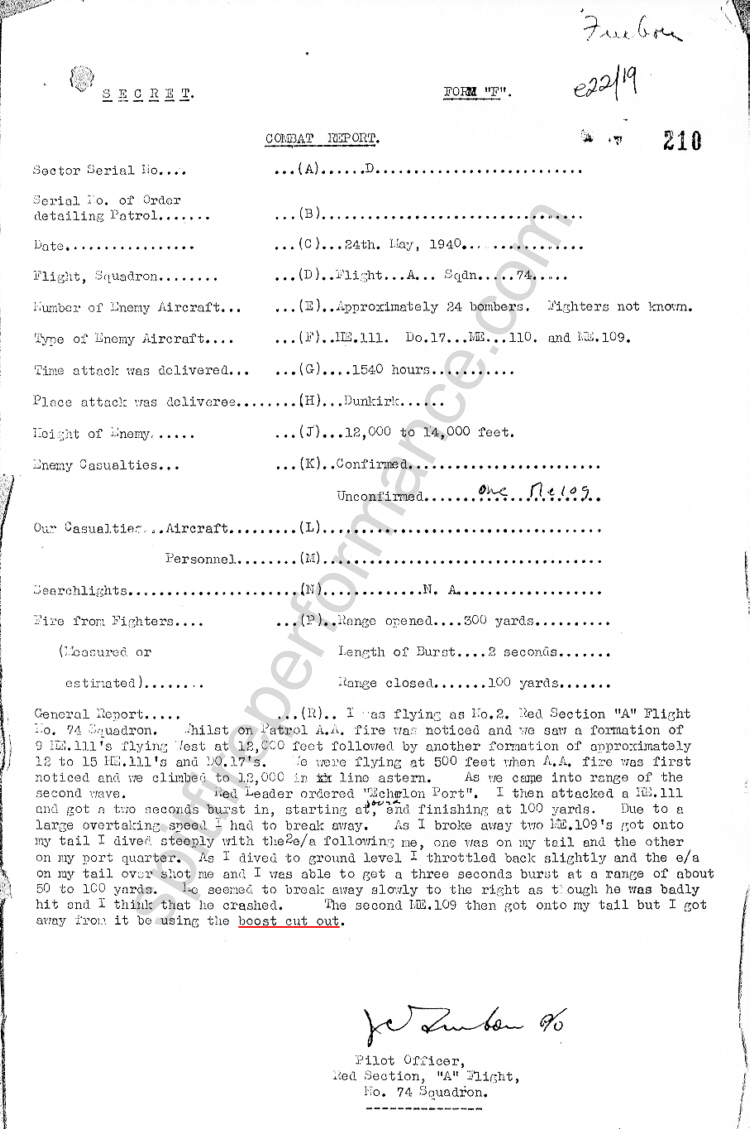

There are several combat reports available from units stationed at Hornchurch during the Dunkirk battle that mention +12 boost, demonstrating that the station and the units flying from there were supplied with 100 octane fuel. During the Dunkirk action in May/early June 1940 Nos. 19, 41, 54, 65, 74, 222, and 616 Squadrons in Spitfires were stationed at Hornchuch.
For example:
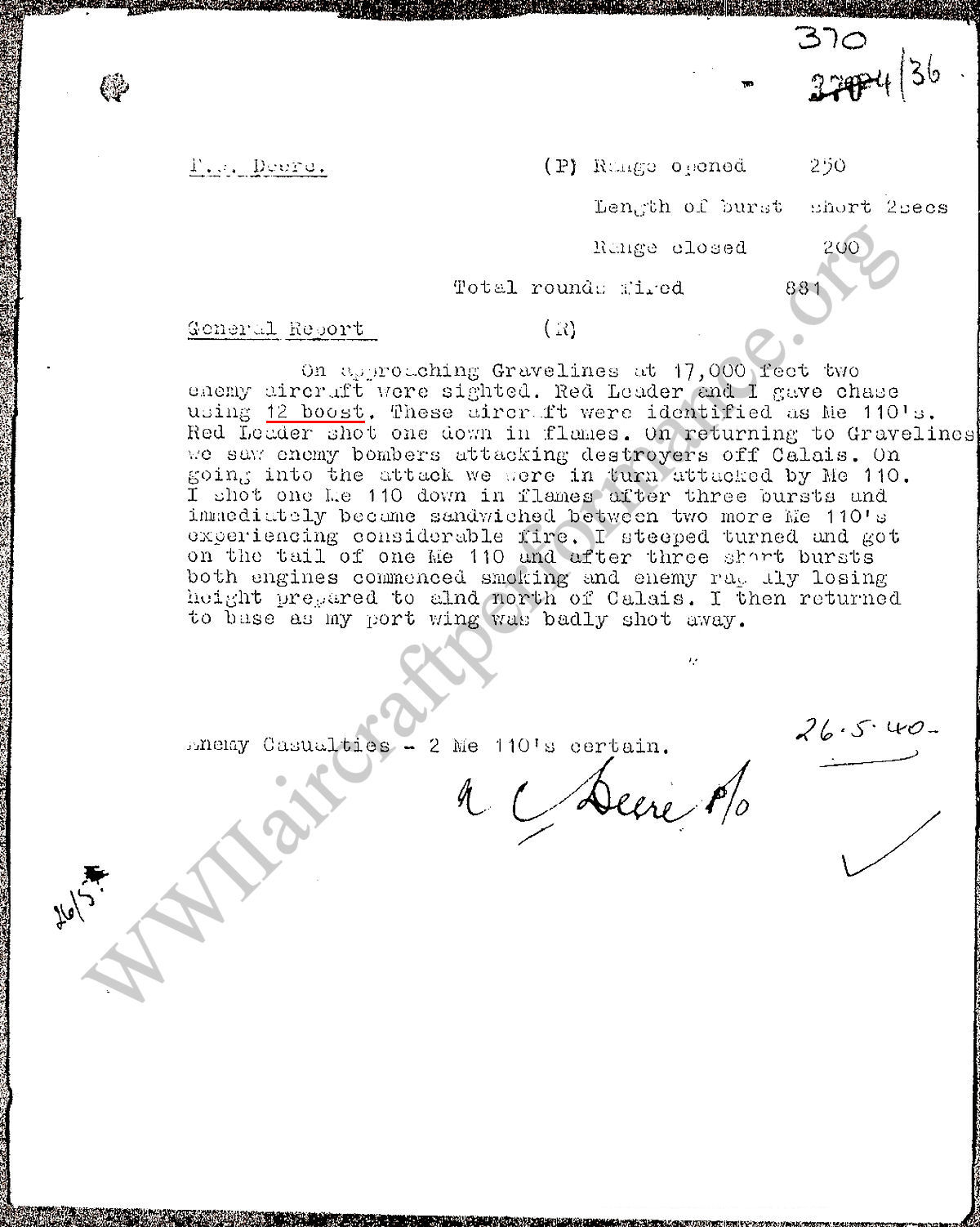
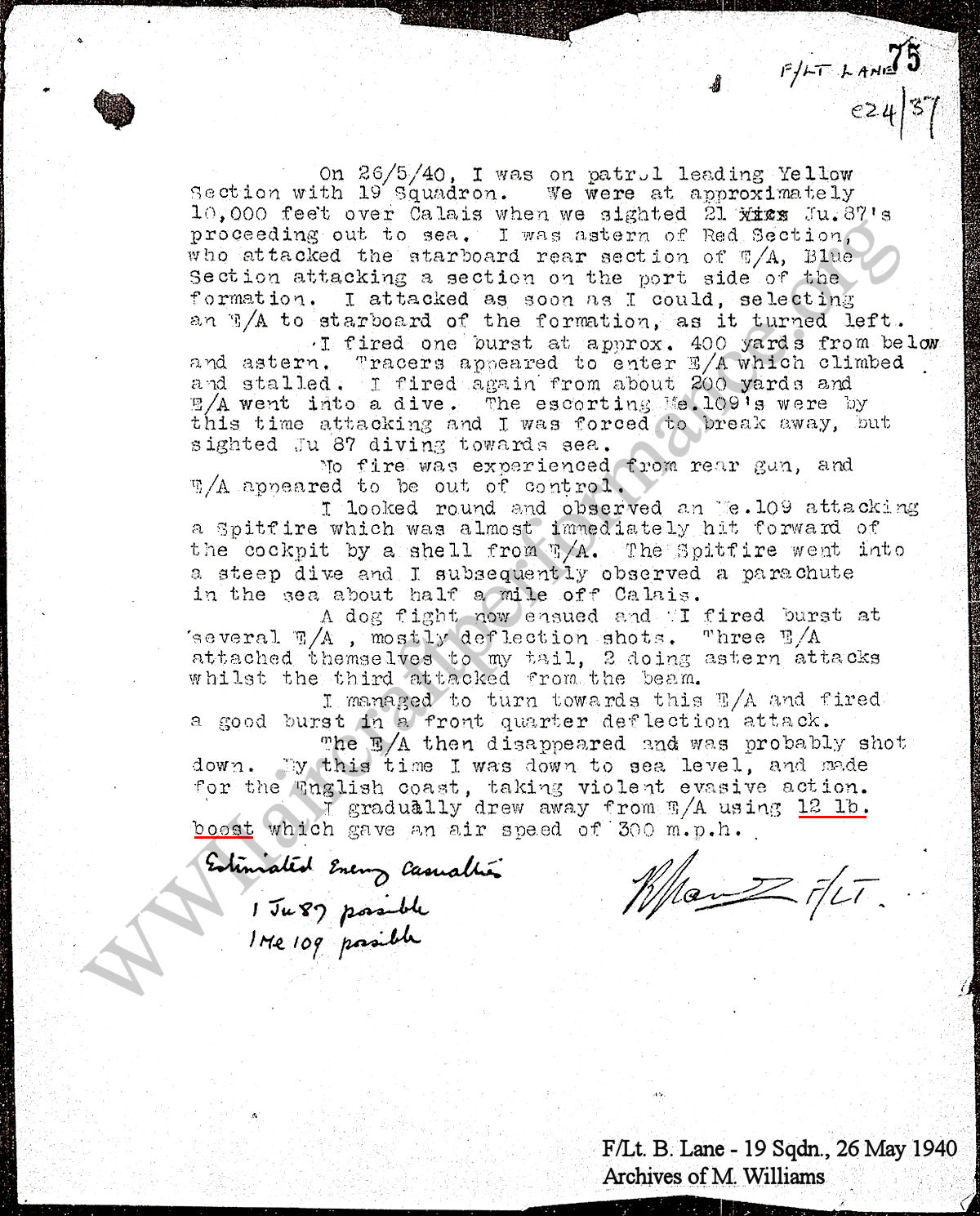
It follows that 19, 41, 54, 74, 222 and 616 squadrons were all supplied with 100 octane.
Similar analysis can be applied to other stations such as North Weald (56, 111 & 151):
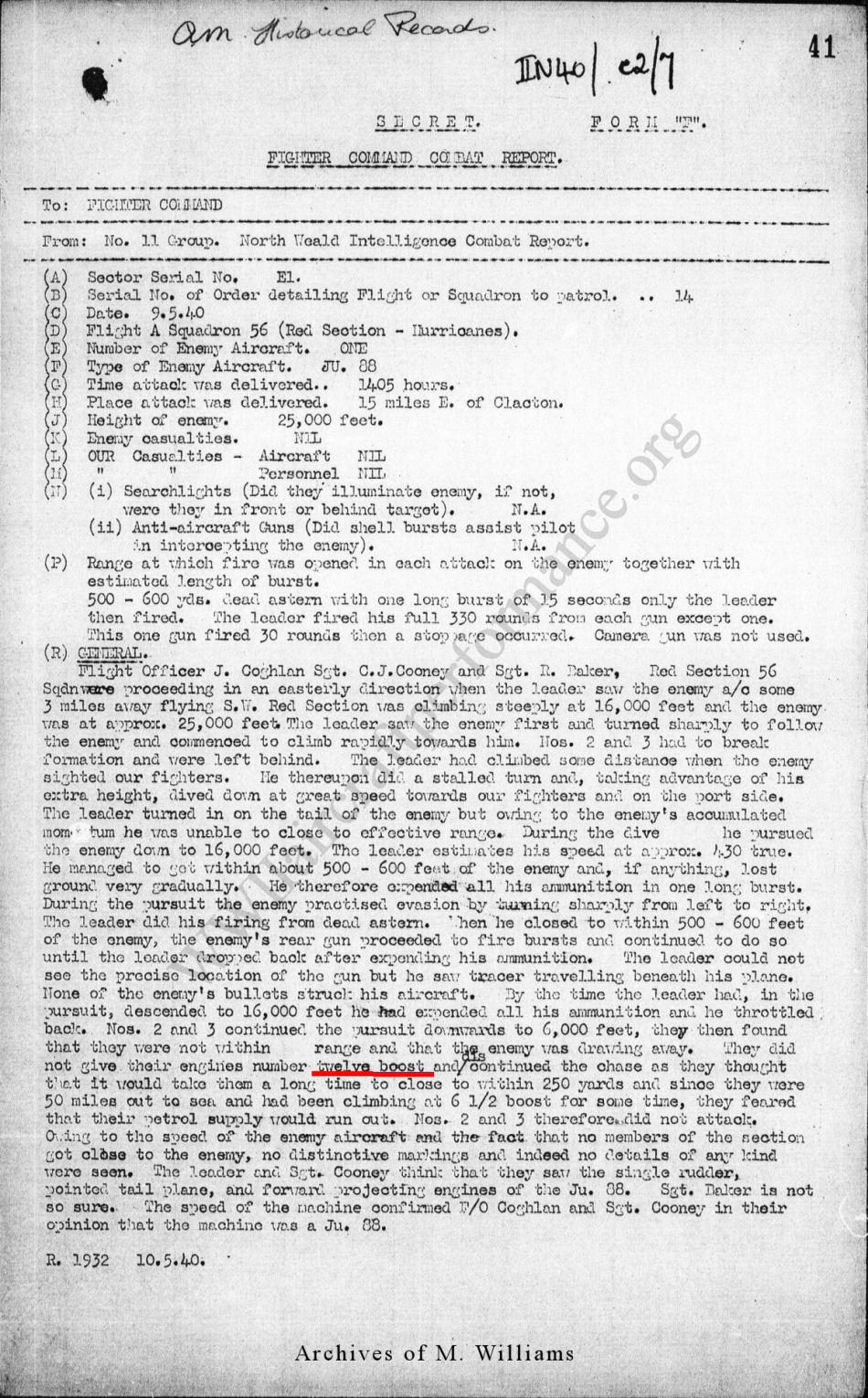
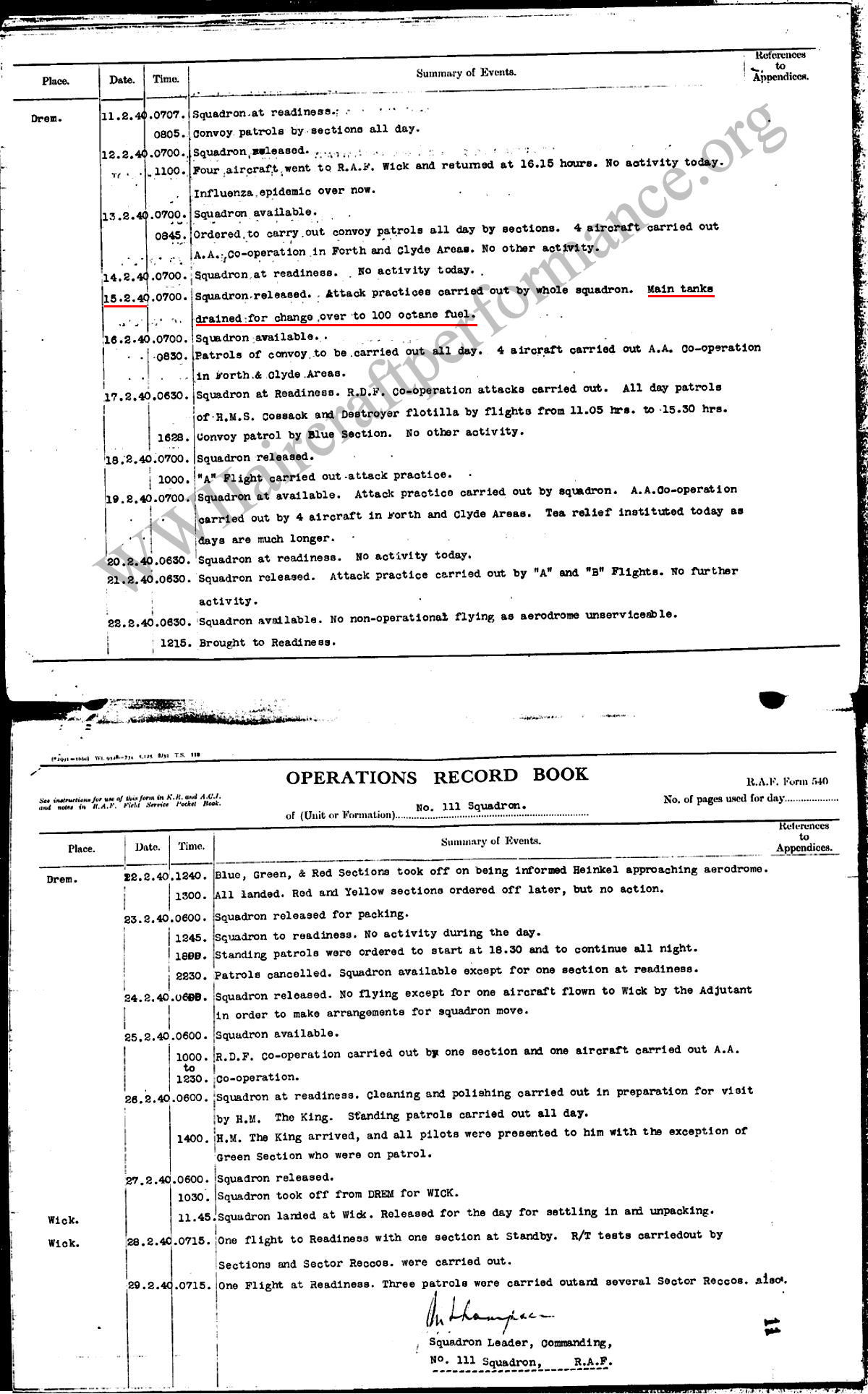
...Biggin Hill (32, 79, 213, 229, 242, 610); Tangmere (601, 145), Hawkinge (
245) Kenley, Northholt, etc, etc…